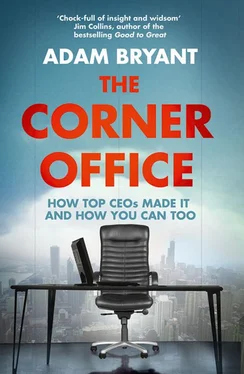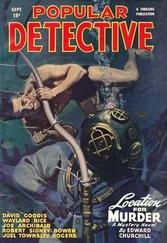Another possible explanation is that a lag exists in the business world. There was a time when simply having certain information was a competitive advantage. Now, in the Internet era, with oceans of data available to all with just a few clicks of a mouse and keyboard, others can get easy access to the same information. That puts a greater premium on the ability to synthesize, to connect dots in new ways, and to ask the simple, smart question that leads to an untapped opportunity.
“I’d love to teach a course called ‘The Idea,’ ” said Dany Levy, the founder of DailyCandy.com. “Which is basically, so you want to start a company, how’s it going to work? Let’s figure it out – just a very practical plan, but not a business plan, because I feel like business plans now feel weighty and outdated. It seems, back in the day, that the longer your business plan was, the more promising it was going to be. And now, the shorter your business plan is, the more succinct and to the point it is, the better. You want people to get why your business is going to work pretty quickly.”
“Schools could do a better job teaching the value of brevity,” said Guy Kawasaki, the co-founder of Alltop, a news aggregation site, and managing director of Garage Technology Ventures.
“What you learn in school is the opposite of what happens in the real world,” he said. “In school, you’re always worried about minimums. You have to reach twenty pages or have so many slides or what ever. Then you get out in the real world and you think, ‘I have to have a minimum of twenty pages and fifty slides.’ They should teach students how to communicate in five-sentence e-mails and with ten-slide PowerPoint presentations. If they just taught every student that, American business would be much better off. No one wants to read War and Peace e-mails. Who has the time? Ditto with sixty PowerPoint slides for a one-hour meeting.”
Steven A. Ballmer, the CEO of Microsoft, said he understands the impulse to share all the underlying research that led to a conclusion. But he changed the way he runs meetings to get to the conclusion first.
“The mode of Microsoft meetings used to be: You come with something we haven’t seen in a slide deck or presentation. You deliver the presentation. You probably take what I will call ‘the long and winding road.’ You take the listener through your path of discovery and exploration, and you arrive at a conclusion. That’s kind of the way I used to like to do it, and the way Bill Gates used to kind of like to do it. And it seemed like the best way to do it, because if you went to the conclusion first, you’d get: ‘What about this? Have you thought about this?’ So people naturally tried to tell you all the things that supported the decision, and then tell you the decision.
“I decided that’s not what I want to do anymore. I don’t think it’s productive. I don’t think it’s efficient. I get impatient. So most meetings nowadays, you send me the materials and I read them in advance. And I can come in and say: ‘I’ve got the following four questions. Please don’t present the deck.’ That lets us go, whether they’ve organized it that way or not, to the recommendation. And if I have questions about the long and winding road and the data and the supporting evidence, I can ask them. But it gives us greater focus.”
Some CEOs put strict limits on PowerPoint slides. The rule, of course, is a way to force people to put in the time and energy to sort out what’s truly important and what’s extraneous. Sometimes this work is most effectively done away from a computer. A blank piece of paper. A pencil. These are the only tools that really matter for what is often the most difficult step: thinking.
“I say, ‘Three slides, three points,’ ” said James Schiro of Zurich Financial Ser vices. “You really can’t manage more than three or four things at the most, but I like to see it in three slides. I hate Power-Point presentations. If you’re working in an area, and you are running a business, you ought to be able to stand up there and tell me about your business without referring to a big slide deck. When you are speaking, people should focus on you and focus on the message. They can’t walk away remembering a whole bunch of different things, so you have to have three or four really key messages that you take them through, and you remind them of what’s important.”
Simplifying the complex is the CEO’s job, and CEOs do it all day long. They are paid to create order out of chaos, to identify the three or five things employees need to focus on rather than twenty things that will send people off in different directions. They want to avoid the corporate equivalent of that expression frequently heard on the golf course – paralysis by analysis.
“Even before I go into a company,” said Greg Brenneman of CCMP Capital, “or even if we’re looking at a business here at CCMP, I’m constantly asking the question, ‘What are the two or three levers that, if done right, if pulled correctly, will really turn this business?’ Then I take that and put it into a one-page plan. If I can’t simply put what needs to be done on one page, I probably haven’t thought it through very well. I learned back in the days when I was consulting at Bain & Company – and before that when I was at Harvard Business School doing case studies – that they give you more information than you could possibly read. So you needed to quickly step back and say, ‘What are the two or three things that really matter?’ And I find in the world that people don’t really do that often. They just dive into all this detail and start using acronyms and buzzwords and they don’t step back. When one of our guys is presenting an investment, you always kind of know they have it if they can explain it very quickly. And if it takes a really long time and you’re into the square root of the price of oil in Uzbekistan, you probably know that it’s gotten too complicated, and that’s when I start asking questions – when people start having trouble simply saying, ‘Here’s the idea.’ ”
William Green of Accenture offers a telling example of the art of simplification. He shared the story of how he once sat through a three-day training session for new managers. He said he counted sixty-eight things that the managers were told they needed to do to be successful—“everything from how you coach and mentor to your annual reviews, filling out these forms, all this stuff.
“And I got up to close the session, and I’m thinking about how it isn’t possible for these people to remember all this. So I said there are three things that matter. The first is competence – just being good at what you do, what ever it is, and focusing on the job you have, not on the job you think you want to have. The second one is confidence. People want to know what you think. So you have to have enough desirable self-confidence to articulate a point of view. The third thing is caring. Nothing today is about one individual. This is all about the team, and in the end, this is about giving a damn about your customers, your company, the people around you, and recognizing that the people around you are the ones who make you look good. When young people are looking for clarity – this is a huge, complex global company, and they wonder how to navigate their way through it – I just tell them that.”
Tachi Yamada, the president of the Bill and Melinda Gates Foundation’s Global Health Program, said that this ability to spot the key levers in any project or plan is vital for executives as they get further away from doing the work itself, and more into a management role where they must delegate. Yamada advocates for an alternative approach to micromanagement: what he calls “micro-interest.” A prerequisite for that is being able to quickly figure out the two or three things that matter in any project.
Читать дальше












